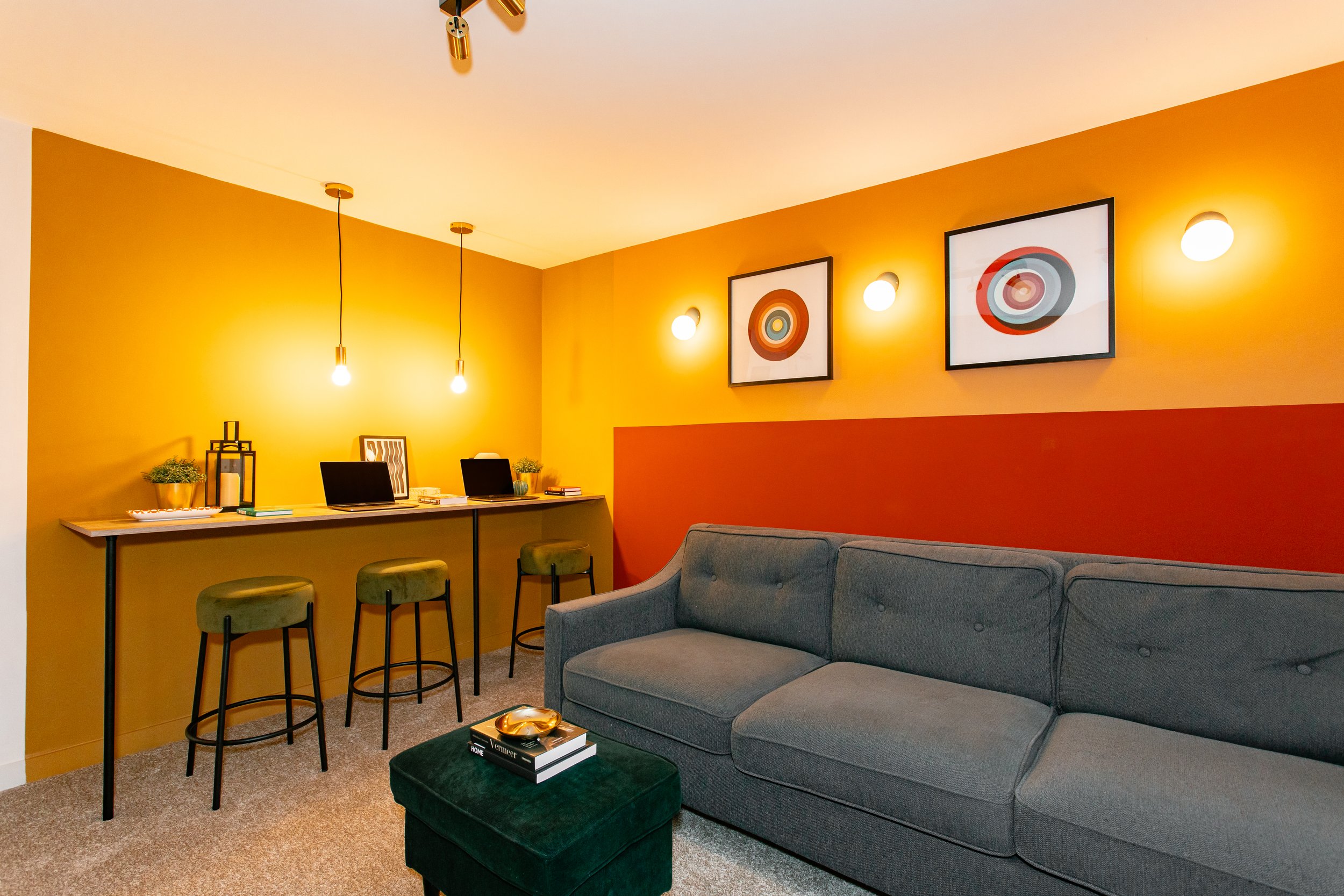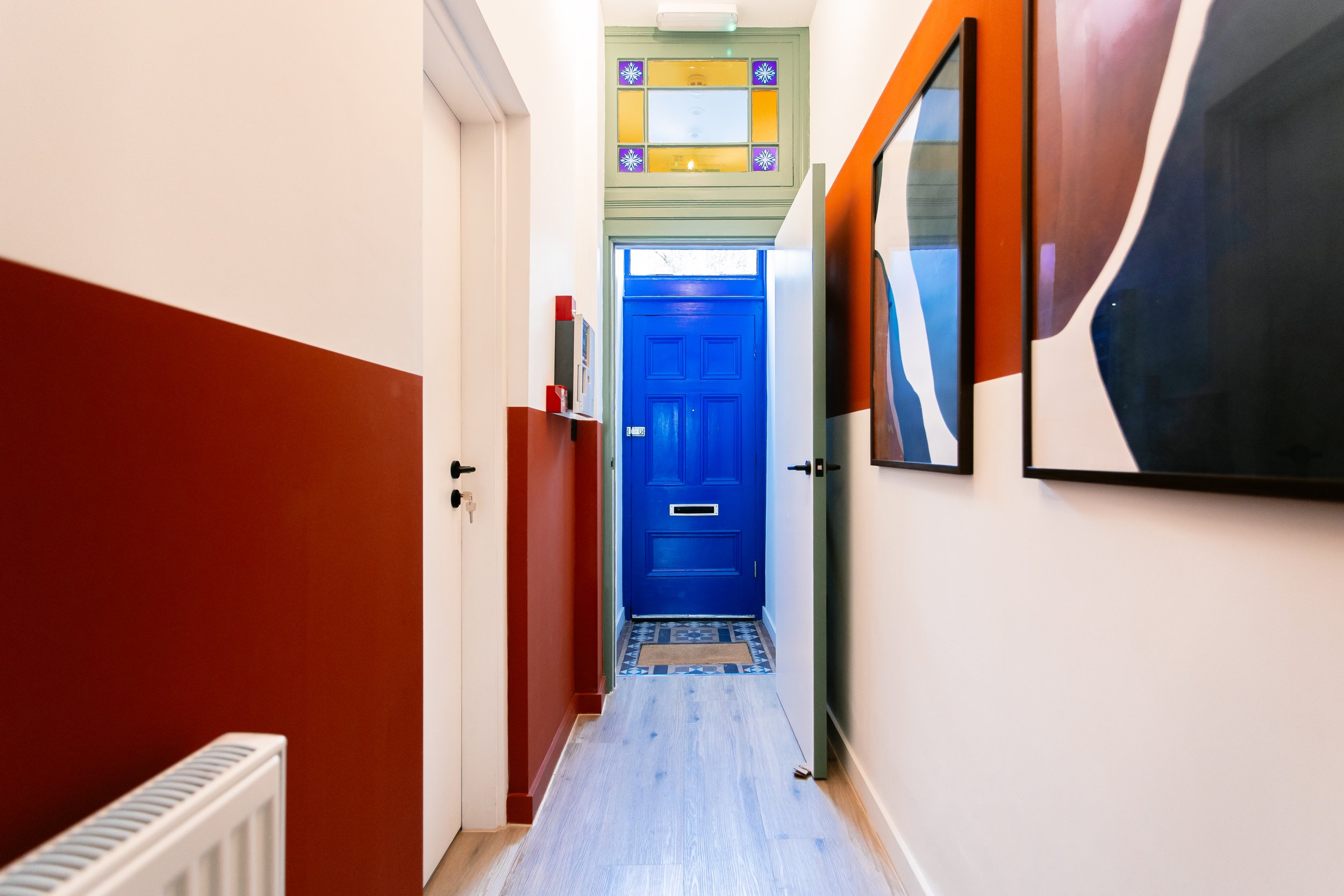Inefficient Property Design: How You’re Sabotaging Your Own Profits
I bet with you that you've heard it before—in the development world, every decision counts.
However, while developers focus heavily on budgets, timelines, and construction, one critical aspect often gets overlooked — design.
Many developers don’t realise that inefficient design choices can silently sabotage their profits. And if you’re not paying attention to design from the very beginning, you’re likely leaving money on the table.
Design is more than just fluffing cushions or selecting a color scheme; it’s about optimising space, enhancing functionality, and increasing the market value of your developments, and creating desirability.
Challenging conventional development practices and outlining the most common design errors developers make isn’t an easy task. However, I believe that developers can make a difference and create transformational projects that make an impact.
By avoiding key design mistakes you will achieve significantly better project outcomes.
Details @ Marwalmersley
The Hidden Costs of Inefficient Design
Poor design can manifest in many ways, from wasted space and awkward layouts to choosing poor quality materials. Developers who fail to consider design as a strategic element often find themselves dealing with unexpected issues down the line—issues that can hurt both short-term profits and long-term property value.
Why is this so important? Because every square meter matters!
The way you design a space affects how it’s used, perceived, and valued in the market. It’s not just about maximising every inch; it’s about creating properties that function seamlessly, attract high-quality tenants or buyers, and ultimately generate higher returns on investment (ROI).
Common Design Mistakes That Are Sabotaging Your Profits
Once, a client told me in frustration, "If only I knew, I wouldn’t have made those decisions…"
Let's talk about key design mistakes that developers frequently make and how you can avoid them.
1. Poor Space Planning: Wasting Valuable Square Meters
One of the biggest mistakes developers make is not maximising the available space in their properties.
Inefficient floor plans, awkward room shapes, or poorly designed layouts can lead to spaces that feel cramped or unusable, like doors that bump into furniture or toilets. In a market where every square meter has a price, wasted space translates directly into lost profits.
What you can do: Start with a design-focused approach that prioritises space utilisation, circulation and flow. Whether it’s a commercial development or a residential project, think about how each room flows into the next. Consider the function of each space—how will tenants or buyers use the property day-to-day? Aim to create open, flexible layouts that maximise the potential of the space. Do this - when I designing, I imagine myself using the property to test its space and functionality.
2. Ignoring Market Needs: Designing for Yourself, Not for the Buyer
Many developers fall into the trap of designing properties based on personal preferences or outdated trends, without considering the current market demand.
What worked in previous projects might not work today. If your design doesn’t meet the needs and expectations of today’s buyers or tenants, your property will sit on the market for longer than expected.
What you can do: Do your thorough due diligence on market research before starting your design. Who is your target market? What are their lifestyle preferences? A young professional will have very different expectations from a growing family. Tailoring your design to your market will make the property more attractive, shortening the sales or letting process and boosting your returns.
Dining @ Marwalmersley
3. Overlooking the Importance of Lighting
Lighting can transform a space, yet it’s often an afterthought in property development.
Dimly lit spaces can make even the most well-designed properties feel small, uninviting, and underwhelming. On the other hand, well-lit rooms—whether through natural light or carefully placed artificial lighting—can enhance the perceived value of a property, making it feel larger, warmer, and more welcoming.
What you can do: Integrate lighting into your design plan early. Maximise natural light by positioning windows strategically and use artificial lighting to create ambiance and functional lighting. Consider how different types of lighting (ambient, functional, and accent) can highlight key features of your property and improve overall functionality.
4. Curb Appeal: Neglecting the Exterior
First impressions matter.
If your development’s exterior is neglected, potential buyers or tenants might not even make it inside. Whether it’s an outdated façade, poorly maintained landscaping, or inadequate signage, a lack of curb appeal can lower interest and drive down desirability and perceived value of a development.
What you can do: Invest in exterior design as much as the interiors. Create an inviting entrance, focus on landscaping, and choose materials that give your development a modern, sleek, and attractive look. A development’s exterior is its first chance to impress—don’t waste it.
5. Choosing Short-Term Solutions Over Long-Term Value
In an effort to cut costs, some developers choose cheaper materials, fixtures, or finishes that look good initially but wear down quickly. This leads to higher maintenance costs, dissatisfied tenants, and a shorter lifespan for the development
What you can do: Think long-term. Invest in durable, quality materials that will stand the test of time. While the initial investment might be higher, the long-term benefits—in terms of reduced maintenance, better tenant retention, and sustained property value—far outweigh the upfront costs.
Lounge @ Marwalmersley
The Financial Impact of Bad Design
Inefficient and poor design doesn’t just affect how a property looks or feels—it directly impacts your bottom line translating into lost profits—see below:
Longer Time on the Market: Poorly designed interiors or unappealing exteriors can cause developments to sit on the market longer, increasing holding costs and delaying ROI.
Lower Sale/Rental Prices: Developments that don’t meet market expectations in terms of design and functionality often need to be priced lower to sell or attract tenants, reducing your profit margins.
Higher Vacancy Rates: Poor design leads to higher vacancy rates, as tenants are less likely to renew tenancies in spaces that are uncomfortable or impractical to live in, creating turnover costs and impacting cash flow.
Increased Maintenance Costs: Cheap materials and inefficient designs can lead to frequent repairs and replacements, eating into your profits over time.
How to Turn Things Around: Prioritise Design - Maximise Profits
To avoid leaving money on the table, it’s essential to adopt a design-first approach.
This doesn’t mean you have to become a design expert, but it does mean you should work closely with professionals who understand the intricacies of property design and its impact on profitability and desirability.
Here’s how you can turn things around:
1. Collaborate with Design Experts Early
Design shouldn’t be an afterthought—it should be part of the initial planning process. Collaborate with architects and designers from the beginning to ensure every aspect of the development is functionally optimised and aligned with your target market.
2. Stay Informed About Design Trends
While timeless design is always a safe bet, staying informed about current design trends can give you a competitive edge as it influences tenants and buyers behaviour. Incorporating features like smart home technology, energy-efficient appliances, and sustainable materials early into your design can make your development more attractive and justify higher price points.
3. Focus on Long-Term Value, Not Short-Term Gains
Cutting corners on design might save you money upfront, but it will cost you in the long run. By investing in quality design and materials from the outset, you’ll create properties that stand the test of time, retain their market appeal, and generate consistent returns over the years.
Hallway @ Marwalmersley
How Good Design Can Save Your Project
Let’s look at a real-world example. Consider a developer who initially skimped on interior design, thinking that buyers would prioritise location over layout. After six months on the market with no offers, they brought in a design team to reimagine the space. The designers improved the layout, incorporated natural light, and used modern finishes. Within two months of relaunching the property, it sold for 15% above the original asking price.
The Bottom Line: Don’t Sabotage Your Own Profits
Neglecting design or inefficiently implementing it will cost you—both in time and money.
By avoiding common design mistakes and embracing a thoughtful, strategic approach, you can create developments that not only look great but deliver the returns you’re aiming for.
But the cost of poor design isn’t just financial.
The frustration of not living the life you envisioned through property development leaves a gap between expectation and reality. This can lead to deep dissatisfaction as you realise you’re sacrificing your freedom of lifestyle for minimal gains—working harder, stressing more, and seeing little reward for your efforts.
If you’re serious about maximising profits and ensuring the success of your developments, it’s time to prioritise design from the start. Don’t leave money on the table— use design as a tool to enhance market appeal, reduce costs, and achieve both financial and personal fulfillment.
Don’t Let Inefficient Design Hold You Back
The inefficient design doesn’t have to hold your developments back. By addressing common mistakes, you can create spaces that stand out, attract buyers or tenants, and deliver better returns. Every detail counts when it comes to maximising your profits, and thoughtful design is the key to unlocking your property’s full potential.
Ready to take the next step?
Get in touch with us today and gain clarity on where you stand - Check out our Property Development Assessment Scorecard:
https://exploreourworld.mar-design.co.uk/assessment
It’s designed to provide a clear snapshot of where you stand and identify key areas for improvement to help you maximise your developments.
Check out what investors say.
“10 out of 10! Mardesign made it so easy with the design and technical drawings that I didn't even have to change things with my builder onsite. This meant the build price didn't change from the quote, project was completed fast and I got an outstanding uplift on rents and value. Mardesign is now integrated into our design process.”
—Jasdeep Jassal








